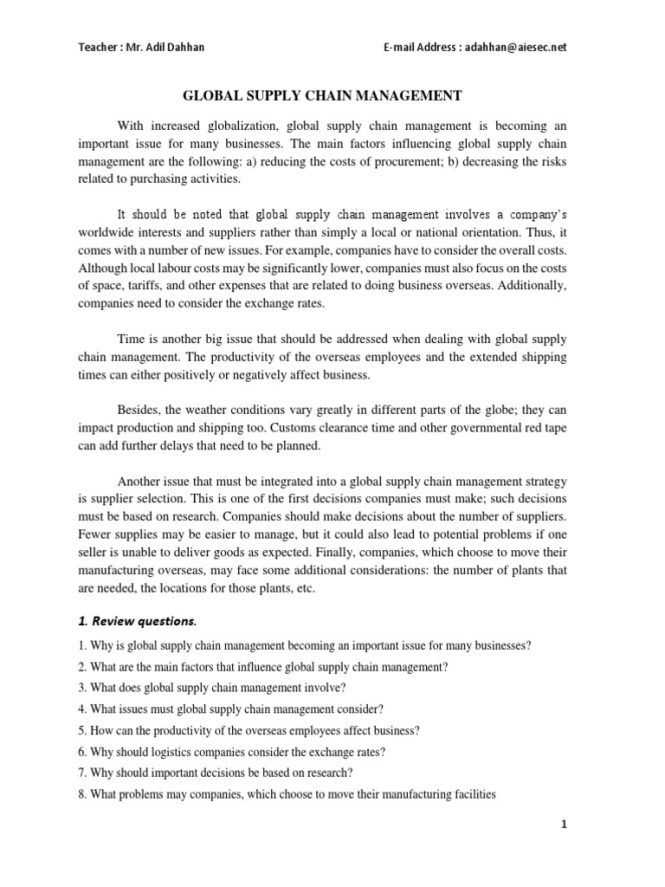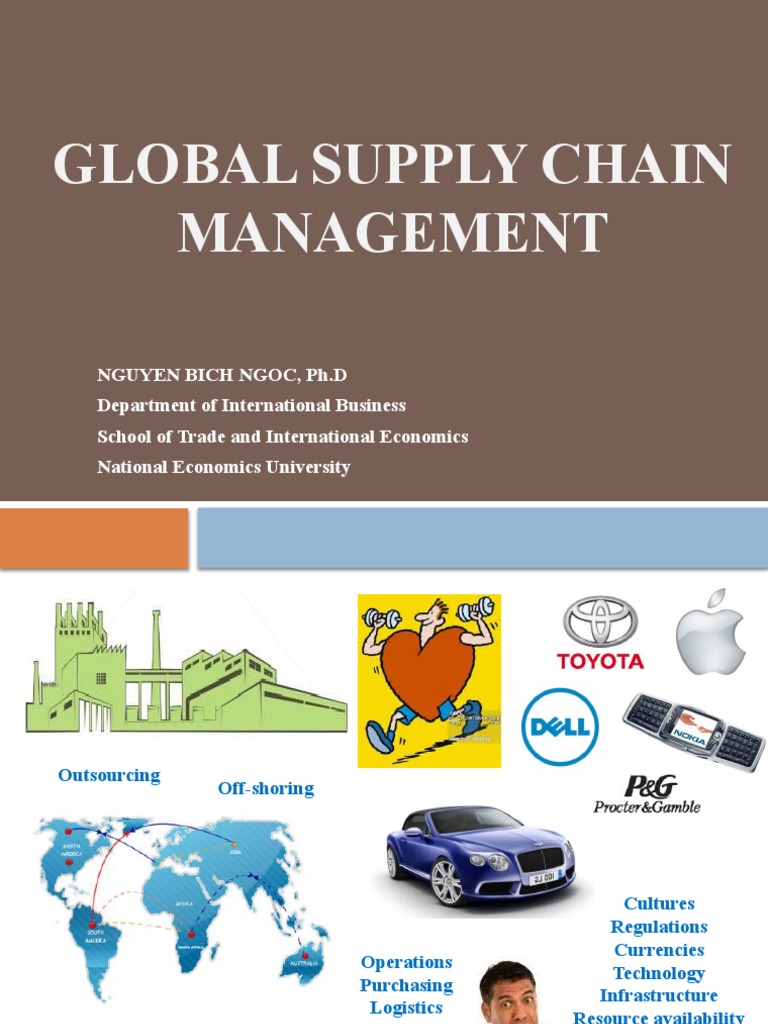

Strategies to overcome common challenges in global supply chain management are crucial for businesses operating in today’s interconnected world. A disrupted supply chain can cripple a company’s ability to deliver products, impacting revenue and market share. Global supply chain management encompasses the entire process of sourcing materials, manufacturing products, and distributing them to consumers worldwide. This intricate network is susceptible to various hurdles, from natural disasters to geopolitical instability. This article will delve into strategies for mitigating these risks, enhancing resilience, and optimizing the global supply chain to ensure sustainable growth. We’ll cover key areas such as risk mitigation, technology implementation, and relationship building. By the end, you’ll understand how to navigate supply chain complexities and thrive in a globalized economy.
Identifying and Mitigating Supply Chain Risks
Understanding the Scope of Global Supply Chain Risks
Global supply chains are intricate networks, stretching across continents and involving numerous stakeholders. Disruptions can emerge from various sources. Natural disasters, political instability, pandemics, and even unexpected labor disputes can cause significant delays and disruptions. Understanding these potential risks and their ripple effects is the first step toward mitigation. A thorough risk assessment helps businesses to anticipate issues and develop strategies to circumvent them. A significant component of this involves recognizing the critical dependencies and vulnerabilities within each stage of the process. A company may find that their production solely relies on parts from a single supplier in a specific region, exposing them to significant risk from geopolitical or environmental events. For instance, the 2011 Tohoku earthquake and tsunami severely impacted Japanese supply chains, resulting in shortages of key components for industries worldwide. Understanding such event-based risks is critical.
Leveraging Technology for Enhanced Visibility and Control
Implementing Real-Time Tracking and Monitoring Systems
Technology offers powerful tools to enhance supply chain visibility. Real-time tracking and monitoring systems provide insights into the movement of goods throughout the supply chain. This data can reveal potential delays, bottlenecks, and risks in real time. Advanced data analytics tools can analyze this data and predict potential problems before they occur, enabling proactive adjustments. A key example of this technology is GPS tracking, which allows companies to monitor shipments and react to possible delays immediately. Similarly, blockchain technology can increase transparency and traceability across the supply chain, verifying the authenticity of products and preventing counterfeiting. By implementing these technology solutions, businesses can increase the agility and responsiveness of their supply chains.
Building Strong Partnerships and Relationships
Cultivating Trust and Collaboration with Suppliers and Distributors
Strong relationships with suppliers, distributors, and other partners are essential for successful global supply chain management. Trust and communication are key to collaborative problem-solving during periods of disruption. Companies can implement strategies to diversify their supply chain, reducing reliance on a single supplier or region, which will increase resilience. By fostering open communication and establishing mutual goals, companies can create a more collaborative environment. A case study from a major electronics retailer illustrates the benefits of long-term partnerships, highlighting how strategic alliances with key suppliers enhanced product development and supply chain responsiveness during periods of unexpected demand fluctuations.
Optimizing Logistics and Transportation
Utilizing Effective Distribution Strategies
Efficient logistics and transportation are crucial elements of a robust global supply chain. Effective distribution strategies can minimize lead times and maximize the delivery efficiency of goods. Companies can explore different transportation modes, including air freight, sea freight, or rail transport, based on cost and delivery time requirements. Factors such as fuel costs, customs regulations, and potential delays due to weather or political situations should be considered in the decision-making process. Businesses can leverage data analytics to forecast demand and optimize inventory levels to minimize holding costs and the risk of stockouts. This helps ensure goods reach consumers on time, thereby enhancing customer satisfaction.
Fostering Supply Chain Resilience through Diversification
Exploring Alternative Sourcing and Manufacturing Locations
Diversification is key to building resilience in the global supply chain. By exploring alternative sourcing and manufacturing locations, companies can reduce reliance on single points of failure. This approach minimizes risks associated with geopolitical events or natural disasters. Consider diversifying across multiple geographical regions. This strategy helps businesses mitigate supply chain disruptions caused by unexpected events or crises. This means having backups and alternate suppliers for crucial components or raw materials, creating a buffer against potential shortages. For instance, a company sourcing from Asia may also explore opportunities in South America or Africa, diversifying their product portfolio and minimizing risks.
Implementing Risk Management Strategies
Developing Contingency Plans and Crisis Management Protocols
Proactive risk management plays a crucial role in mitigating supply chain disruptions. Establishing contingency plans and crisis management protocols is essential for navigating unforeseen events. These plans should outline the steps to take if a specific disruption occurs, whether it’s a natural disaster or a global pandemic. A key part of this involves creating clear communication channels and assigning roles and responsibilities within the company for dealing with disruptions. Companies need to build the capability to identify potential risks, assess their impact, and develop procedures to handle them in a timely manner.
Embracing Technology for Transparency and Visibility
Utilizing Real-Time Tracking and Data Analytics
Technology advancements have made a significant impact on supply chain management. Companies are using advanced technologies to enhance transparency and visibility in their supply chains. Real-time tracking and data analytics provide insights into the movement of goods, enabling early identification of potential issues and proactively addressing them. Utilizing technology in this way allows for quicker problem-solving and reaction time. Businesses can identify supply chain bottlenecks, monitor inventory levels, and forecast demand using advanced data analytics tools.
Enhancing Communication and Collaboration
Fostering Transparency Among All Stakeholders
Open communication and collaboration between all stakeholders are key to overcoming global supply chain challenges. Companies need to ensure transparent communication with their suppliers, distributors, and customers, fostering a collaborative environment. Implementing efficient communication channels, like instant messaging platforms, facilitates quick information sharing during critical situations. Maintaining open lines of communication is critical for adapting to changing situations and promptly communicating potential problems or delays.
Enhancing Supplier Relationships
Building Trust and Partnership
Strong relationships with suppliers are crucial for a smooth and resilient supply chain. Building trust and fostering strong partnerships with suppliers enables effective communication and problem-solving during times of disruption. Companies that invest in long-term supplier relationships are better equipped to navigate unforeseen circumstances. Developing a strong relationship with suppliers may lead to the exchange of valuable information, contributing to proactive risk management and ensuring resilience within the supply chain.
In conclusion, effectively managing global supply chains requires a proactive and adaptable approach. By anticipating and mitigating potential risks, leveraging technology, and fostering strong relationships, companies can navigate the complexities of today’s global marketplace and ultimately achieve sustainable growth. Implementing these strategies is key to ensuring resilience and competitiveness in the face of ongoing challenges. For a deeper dive into specific solutions, consider consulting industry experts or joining relevant professional development programs.